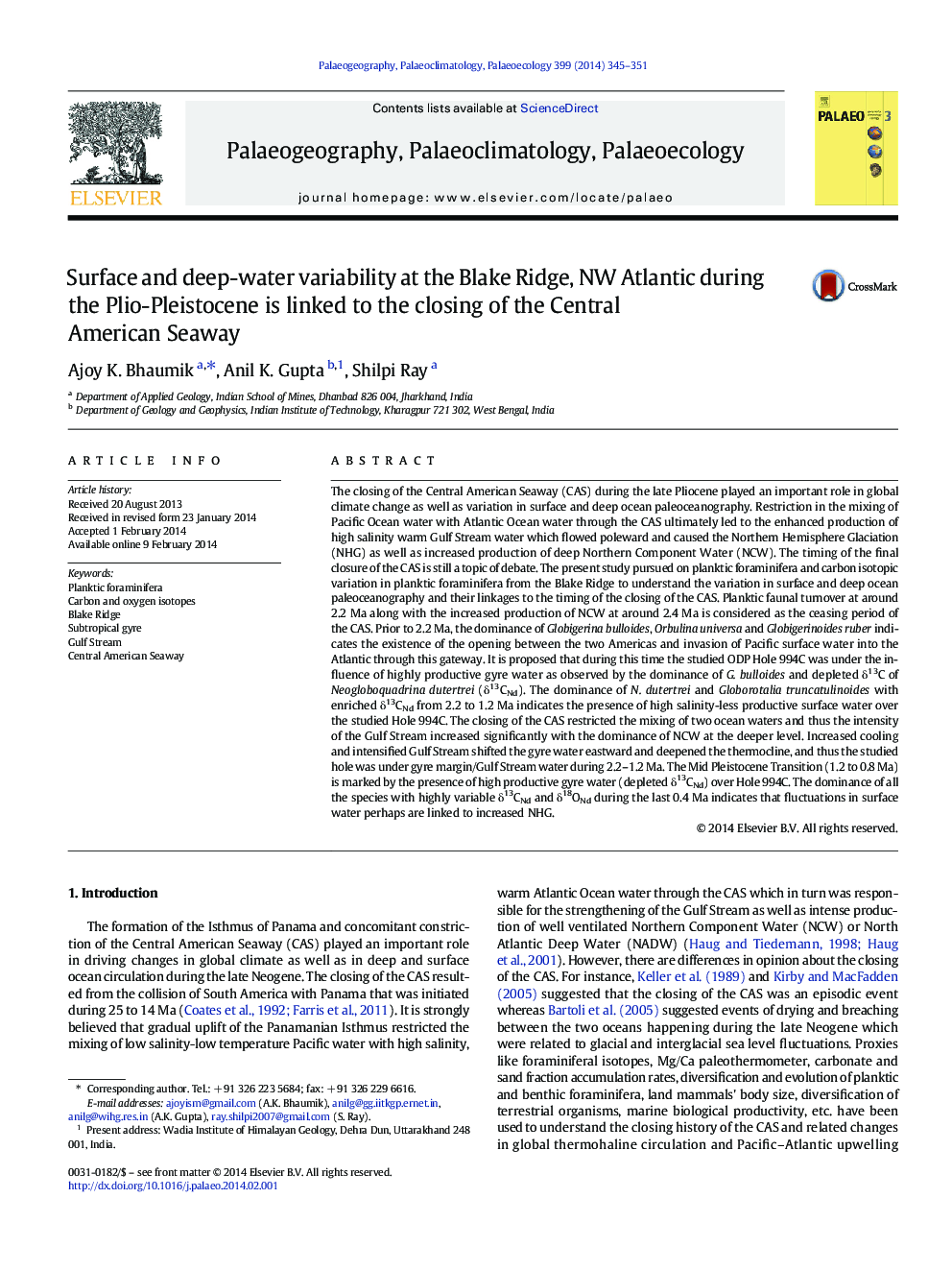| کد مقاله | کد نشریه | سال انتشار | مقاله انگلیسی | نسخه تمام متن |
|---|---|---|---|---|
| 4466317 | 1622191 | 2014 | 7 صفحه PDF | دانلود رایگان |

• Faunal and isotope data from Hole 994C suggest the closing of the CAS at 2.2 Ma.
• Ceasing of the CAS intensified Gulf Stream flow as well as NADW.
• Dominance of gyre water observed during 3.6 to 2.4 Ma and 1.2 to 0.8 Ma
• Dominance of gyre margin water observed during 2.4 to 1.2 Ma and 0.8 to 0.4 Ma
• The last 0.4 Ma suggests that fluctuation in surface water is linked to increased NHG.
The closing of the Central American Seaway (CAS) during the late Pliocene played an important role in global climate change as well as variation in surface and deep ocean paleoceanography. Restriction in the mixing of Pacific Ocean water with Atlantic Ocean water through the CAS ultimately led to the enhanced production of high salinity warm Gulf Stream water which flowed poleward and caused the Northern Hemisphere Glaciation (NHG) as well as increased production of deep Northern Component Water (NCW). The timing of the final closure of the CAS is still a topic of debate. The present study pursued on planktic foraminifera and carbon isotopic variation in planktic foraminifera from the Blake Ridge to understand the variation in surface and deep ocean paleoceanography and their linkages to the timing of the closing of the CAS. Planktic faunal turnover at around 2.2 Ma along with the increased production of NCW at around 2.4 Ma is considered as the ceasing period of the CAS. Prior to 2.2 Ma, the dominance of Globigerina bulloides, Orbulina universa and Globigerinoides ruber indicates the existence of the opening between the two Americas and invasion of Pacific surface water into the Atlantic through this gateway. It is proposed that during this time the studied ODP Hole 994C was under the influence of highly productive gyre water as observed by the dominance of G. bulloides and depleted δ13C of Neogloboquadrina dutertrei (δ13CNd). The dominance of N. dutertrei and Globorotalia truncatulinoides with enriched δ13CNd from 2.2 to 1.2 Ma indicates the presence of high salinity-less productive surface water over the studied Hole 994C. The closing of the CAS restricted the mixing of two ocean waters and thus the intensity of the Gulf Stream increased significantly with the dominance of NCW at the deeper level. Increased cooling and intensified Gulf Stream shifted the gyre water eastward and deepened the thermocline, and thus the studied hole was under gyre margin/Gulf Stream water during 2.2–1.2 Ma. The Mid Pleistocene Transition (1.2 to 0.8 Ma) is marked by the presence of high productive gyre water (depleted δ13CNd) over Hole 994C. The dominance of all the species with highly variable δ13CNd and δ18ONd during the last 0.4 Ma indicates that fluctuations in surface water perhaps are linked to increased NHG.
Journal: Palaeogeography, Palaeoclimatology, Palaeoecology - Volume 399, 1 April 2014, Pages 345–351